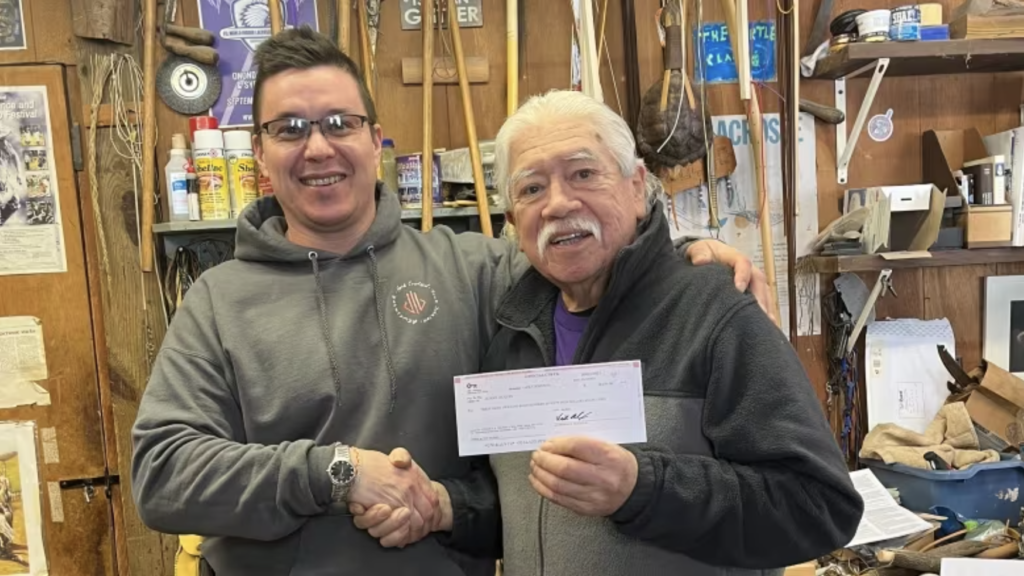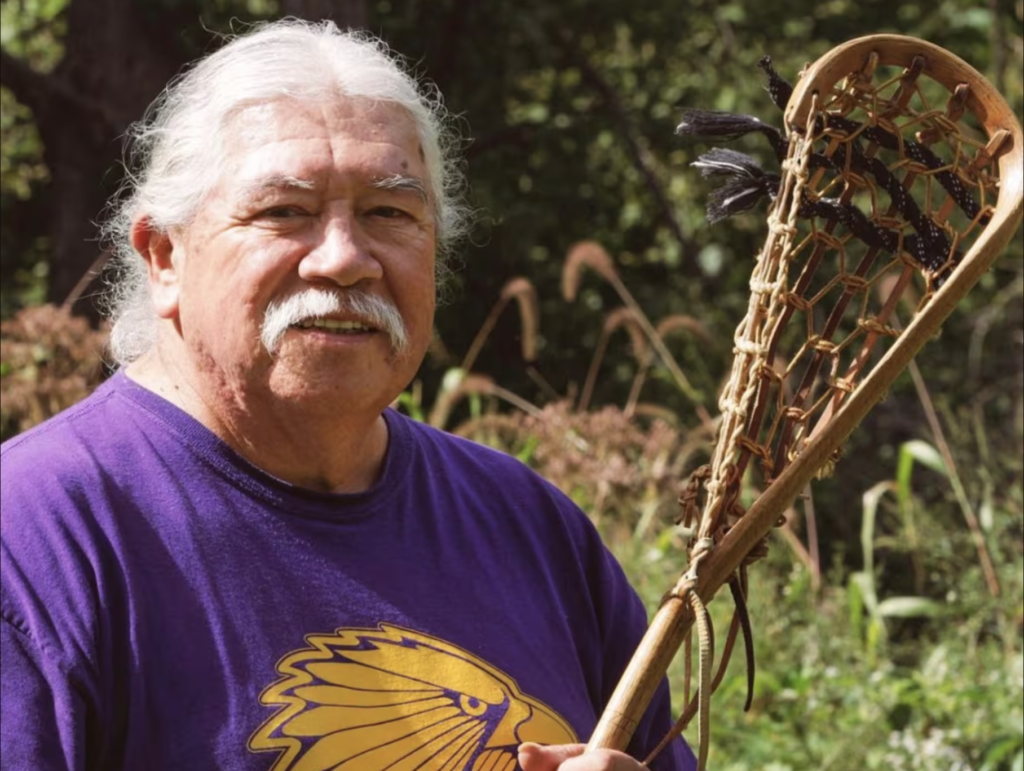‘It was an honor to work with somebody that loved the craft, loved the game, loved the spirit of it’

Master lacrosse stick maker Alfie Jacques died at 74 in June.
Jacques, Turtle Clan from Onondaga Nation Reserve in New York, was taught by his father — also a master woodcarver — to make lacrosse sticks at a young age.
Jacques had a few apprentices who dedicated themselves to the craft. Jack Johnson was one of them.
“It took me about six months for him to even talk to me,” said Johnson, “I had to keep calling and going down and kind of prove to him that I was really serious about it. And then, he finally said, ‘Ok’,” said Johnson of his desire to apprentice with Jacques.
Johnson, 44, from Mohawk Nation at Akwesasne, apprenticed with Jacques for nearly a decade.
He said others had gone to Jacques to learn to make sticks but didn’t follow through, and for a man in his 70s, Jacques’ time was a precious resource not to be wasted.
Jacques was also a Canadian Lacrosse Hall of Famer who played professional lacrosse in the 1960s and 70s.
“It was an honor to work with somebody that loved the craft, loved the game, you know, loved the spirit of it,” said Johnson.
The wooden sticks Jacques made were cherished by the players who received them, like Trav Hill.
Hill was given his first wooden stick made by Jacques when he played for the Iroquois (Haudenosaunee) Nationals in the World Lacrosse Championships in Denver, Colorado back in 2014.

Hill said his traditional wooden stick is one of his most “prized possessions.”
“It’s up there with, pretty parallel to, even winning the NLL championship to own a stick by Alfie. And I felt that way even when he was alive,” said Hill, who played in the National Lacrosse League with Rochester Knighhawks when they won the NLL Champions Cup in 2012.
PASSING ON THE CRAFT
Johnson said traditional lacrosse sticks take about 10 months to make and he, just like Jacques, does everything himself.
“I cut the trees. I break them down. I make the old style gut walls, rawhide, string the sticks. I do everything from start to finish,” said Johnson.
Wooden sticks are made from shagbark hickory which must be cut, dried and carved into shafts.
These shafts are then dried for a month and steamed in between each bending process. A metal mould is used to form a scoop that will become the pocket and a second back bend just above the scoop, for the stick’s balance.
The sticks are dried again before they are cut down to size and carved, seasoned and ready to be netted with leather or rawhide.
Johnson said he makes about 20 sticks at a time, each at various stages of production.
- Lacrosse is more medicine than game for these high school students
- Indigenous teens hope return of lacrosse to Canada Games will inspire future generations
- Akwesasne launches cultural tours due to rising interest in Mohawk history
“Creating these lacrosse sticks is my medicine. Some days I’m not having a good day and I just go out and I finish up a stick and then I go out, shoot around. It kind of keeps your mind in a good place,” Johnson said.
After Jacques became ill, Johnson and friend Stephen Donovan started a GoFundMe page, raising over $40,000 for Jacques and his family.
Johnson — who wants to continue teaching his craft and hopes to teach other Indigenous communities how to make the sticks — plans to work with Jacques’ family to finish the 100 to 150 sticks Jacques started. The remaining proceeds will be donated to the family.
He was encouraged by his mentor to have his own style when it comes to making traditional sticks.
“Don’t worry about the way I make them or the way other people make them,” Jacques told him. “Figure out your own way.”
One of Johnson’s proudest moments was having Jacques check over his finished sticks and give them a seal of approval.
“You know you made it,” he said.

Former Akwesasne Thunder and Iroquois (Haudenosaunee) Nationals goaltender Mike Thompson has been stringing his own lacrosse sticks since he was young but learned to make wooden sticks from Johnson in about 2012.
“Alfie helped me refine my carving. Jack taught me the process,” said Thompson, “Alfie knew all the tricks.”
At the height of his business, Thompson was making about 35-50 sticks a year.
EXTENSION OF THEMSELVES
Thompson prefers using a wooden stick for stability referring to contemporary lacrosse sticks as “tupperware.”
“The plastic sticks spin pretty easy, especially on cement floors,” said Thompson.
For many Indigenous lacrosse players, the connection to their wooden lacrosse stick is spiritual.
Johnson said the traditional wooden sticks must be cared for. They can’t be left in the rain, or in the heat and women are not to touch them because Johnson was taught that a woman’s energy is “too powerful.”
Thompson received his first wooden stick from his wife who had Jacques put it in the car for her. “It’s like a living being,” said Thompson.
For Hill, playing with a wooden stick feels like an extension of his body.
“When I received this one from Iroquois Nationals, it just felt natural holding it and using it,” he said.
“There was a connection that gave you more confidence when you were holding it.”





